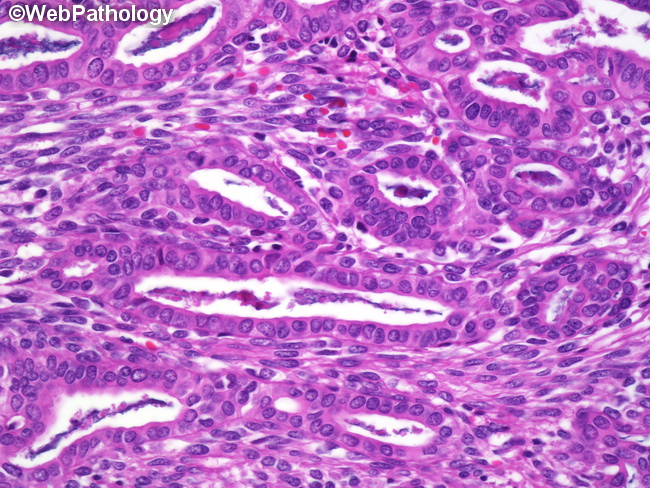Synovial Sarcoma : Differential Diagnosis


Comments:
The differential diagnosis depends upon the subtype of synovial sarcoma and may require molecular diagnostic techniques to rule out other entities. Differential Diagnosis of Biphasic Synovial Sarcoma: The diagnosis of biphasic synovial sarcoma (shown here) is straightforward if the tumor occurs in the vicinity of a large joint in the extremities of a young adult. However, if the tumor location is unusual such as the head and neck region, pleuropulmonary region, or peritoneum, the possibility of carcinosarcoma, glandular malignant peripheral nerve sheath tumor, and malignant mesothelioma should be considered among others. Carcinosarcoma: Both the glandular as well as the spindle-cell components of carcinosarcomas show greater degree of nuclear pleomorphism and anaplasia than biphasic synovial sarcoma. Glandular MPNST: This rare tumor is seen in the background of neurofibromatosis 1 and shows intestinal-type epithelium and goblet cells and occasionally rhabdomyosarcomatous areas. Malignant mesothelioma: Biphasic synovial sarcomas arising in pleuropulmonary region or peritoneum may mimic malignant mesothelioma. The features supporting mesothelioma include older age at presentation, male gender, history of asbestos exposure, diffuse involvement rather than a localized mass, and gradual transition between epithelial and spindle components. In challenging cases, the presence of chromosomal translocation t(X;18)(p11.2;q11.2) or SS18/SSX hybrid protein would support synovial sarcoma and rule out malignant mesothelioma.



